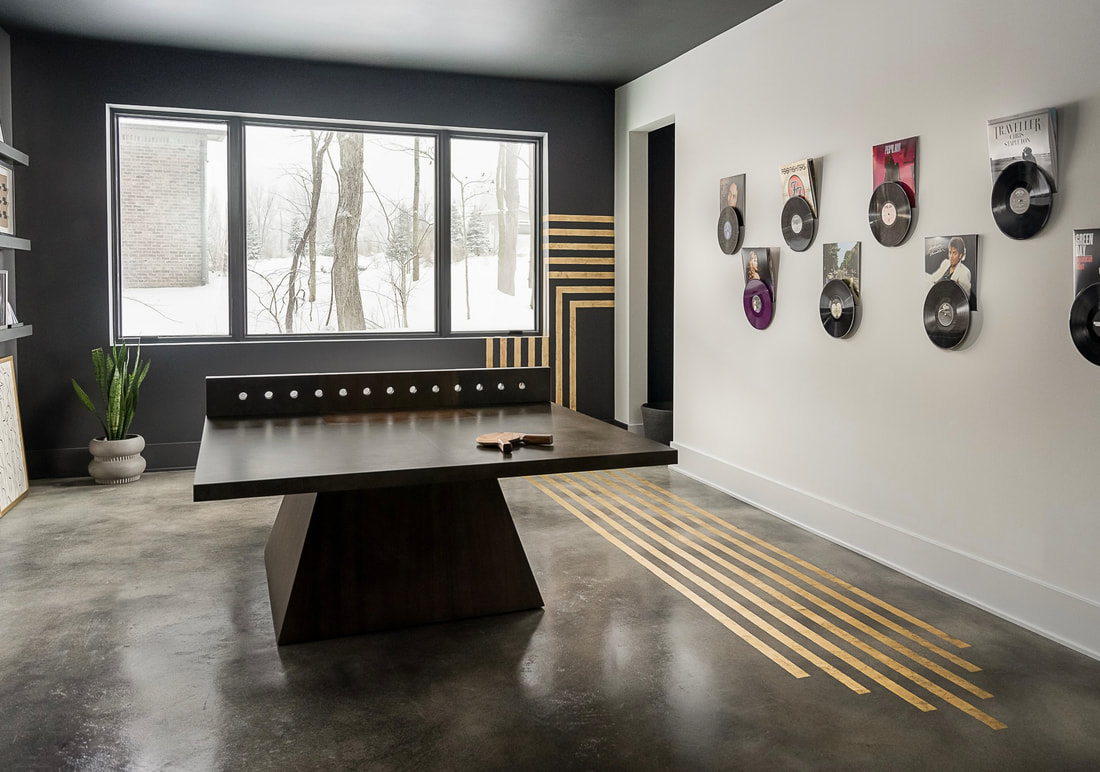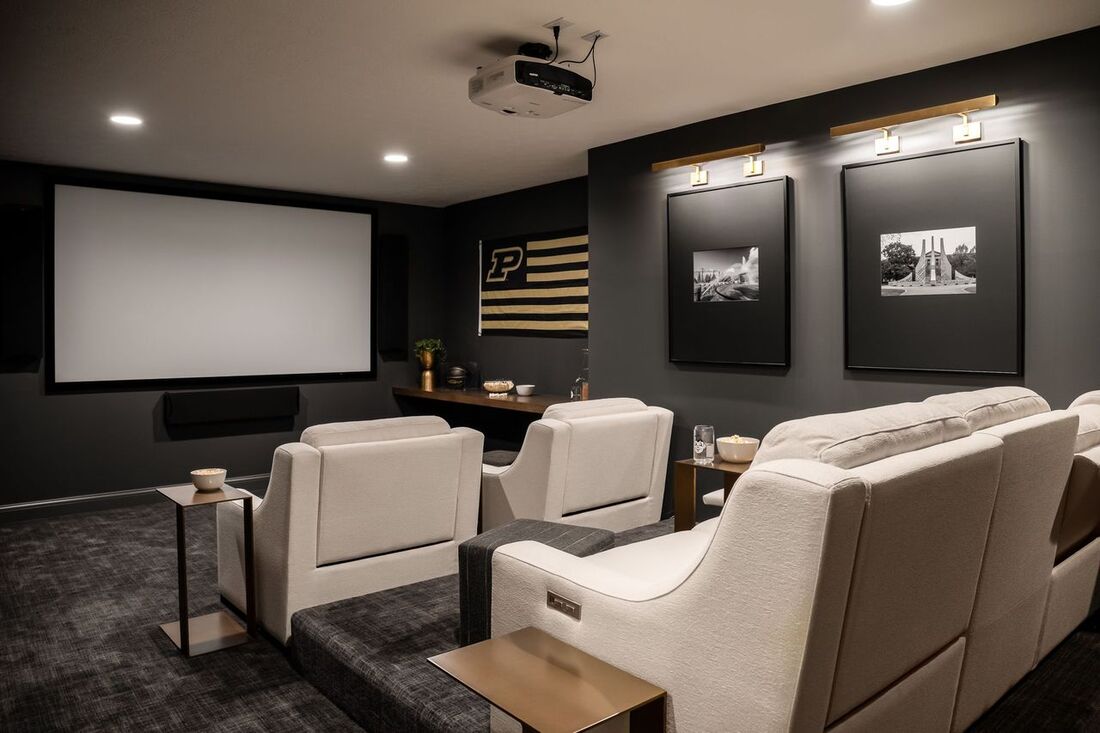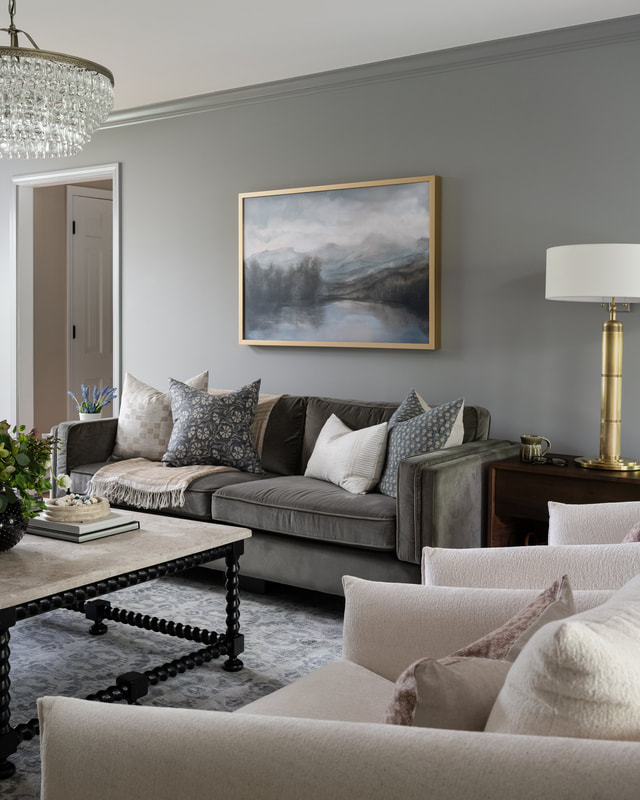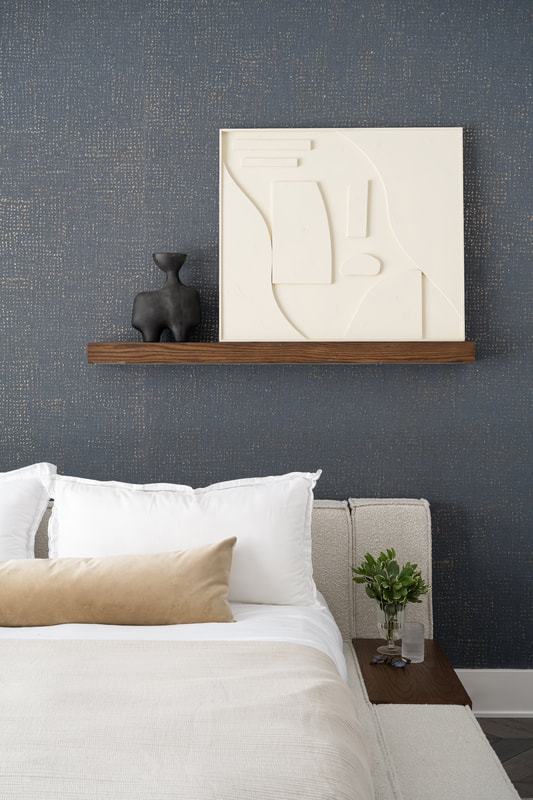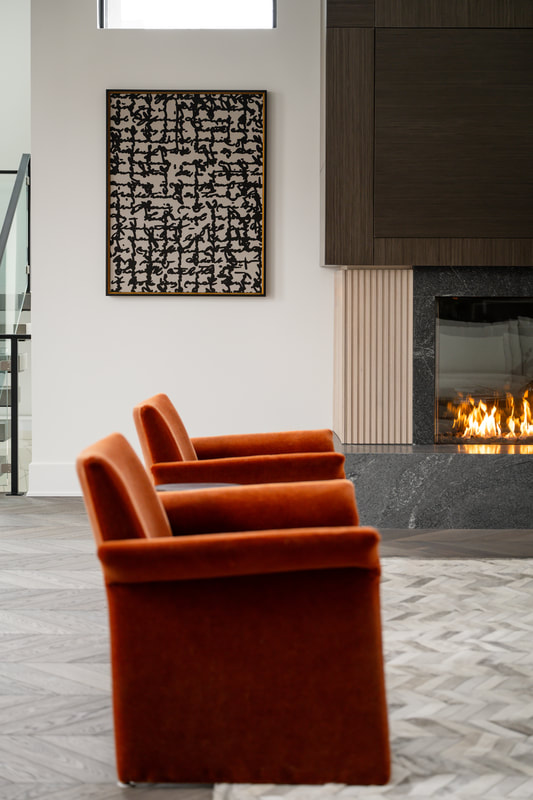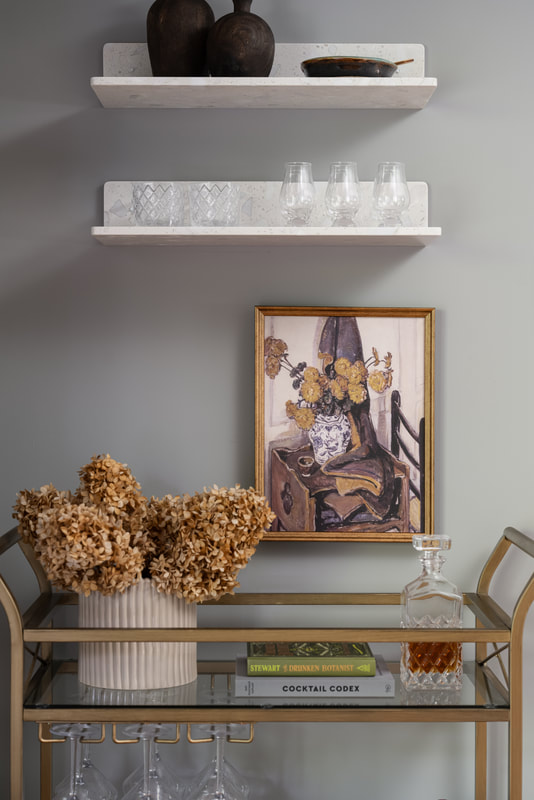The Art of Home
Q&A with Kara Grider of Kara Grider Design
This month, we sat down with local tastemaker Kara Grider to unlock the secrets of transforming living spaces into personal galleries. Discover expert advice on displaying artwork, mixing art styles and lighting tips to curate a home that truly reflects your personality.
Q: What is your philosophy when it comes to incorporating artwork and meaningful family items in your designs?
A: My goal is to make sure the client feels like it's their home. Art is an easy way to do that by bringing in important items. For example, I'm creating a gallery wall with a daughter's paintings for a playroom. It makes the client happy and the daughter feels it's her space. I've also had clients who wanted to bring in memories, like a Purdue graduate for whom we found campus architectural artwork. The vibe of a space is so different when you bring in meaningful pieces.
Q: How do you choose new art to complement a client's existing style?
A: I ensure cohesion by looking at color tones and the space's vibe. I ask clients many questions: Do you want a casual space? We might go with a whimsical piece. Is this an adult sitting area? I'd gravitate toward something sophisticated. Ultimately, it's about the client's feedback. What should the space feel like? How will they use it? We complement existing colors and furnishings, ensuring the artwork's tones are interesting in the space.
A: My goal is to make sure the client feels like it's their home. Art is an easy way to do that by bringing in important items. For example, I'm creating a gallery wall with a daughter's paintings for a playroom. It makes the client happy and the daughter feels it's her space. I've also had clients who wanted to bring in memories, like a Purdue graduate for whom we found campus architectural artwork. The vibe of a space is so different when you bring in meaningful pieces.
Q: How do you choose new art to complement a client's existing style?
A: I ensure cohesion by looking at color tones and the space's vibe. I ask clients many questions: Do you want a casual space? We might go with a whimsical piece. Is this an adult sitting area? I'd gravitate toward something sophisticated. Ultimately, it's about the client's feedback. What should the space feel like? How will they use it? We complement existing colors and furnishings, ensuring the artwork's tones are interesting in the space.
Q: What are your thoughts on mixing different styles?
A: I love mixing styles. When creating a gallery wall, I look for complementary styles. I might pick a modern abstract piece, put a traditional piece next to it, and add a 3D piece for visual interest. I'm always mixing and curating to create an elevated space with multiple levels and layers, not just sticking to one style.
Q: How important is framing when it comes to artwork?
A: Framing is crucial and requires attention to detail. The choice depends on the piece and its placement. If you can get a nice vintage frame that works with your art—you can't go wrong. The history and charm of vintage frames make that piece irreplaceable. A bold print on a large wall might need a thicker frame, while a delicate piece could shine with a thinner brass frame. For unique items like heirlooms or memorabilia, shadowboxes offer a great display option. They allow you to showcase three-dimensional objects and aged edges while protecting them.
Q: How can you enhance artwork with lighting?
A: Lighting is a game-changer for artwork. It's about creating focus and mood. For gallery walls, I often use accent lighting, like art wall lights or discreet overhead spots. This draws the eye and creates a focal point. In bookcases, I might use hidden LED strips to softly illuminate pieces. The key is using lighting to guide attention and enhance the artwork's impact, making your curated pieces highlights of the space.
A: I love mixing styles. When creating a gallery wall, I look for complementary styles. I might pick a modern abstract piece, put a traditional piece next to it, and add a 3D piece for visual interest. I'm always mixing and curating to create an elevated space with multiple levels and layers, not just sticking to one style.
Q: How important is framing when it comes to artwork?
A: Framing is crucial and requires attention to detail. The choice depends on the piece and its placement. If you can get a nice vintage frame that works with your art—you can't go wrong. The history and charm of vintage frames make that piece irreplaceable. A bold print on a large wall might need a thicker frame, while a delicate piece could shine with a thinner brass frame. For unique items like heirlooms or memorabilia, shadowboxes offer a great display option. They allow you to showcase three-dimensional objects and aged edges while protecting them.
Q: How can you enhance artwork with lighting?
A: Lighting is a game-changer for artwork. It's about creating focus and mood. For gallery walls, I often use accent lighting, like art wall lights or discreet overhead spots. This draws the eye and creates a focal point. In bookcases, I might use hidden LED strips to softly illuminate pieces. The key is using lighting to guide attention and enhance the artwork's impact, making your curated pieces highlights of the space.
Kara Grider Design is located in Carmel at 12851 Broad Street Suite 150. Visit karagriderdesign.com and follow @karagriderdesign on Instagram to learn more and see her beautifully curated spaces.
Copyright © 2025 Pena Group, Inc. All rights reserved.


